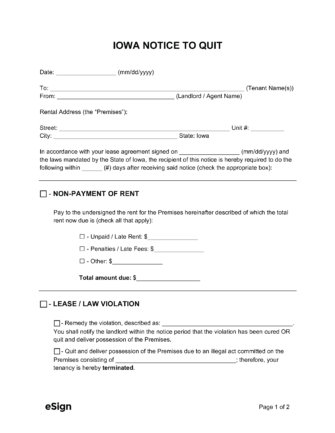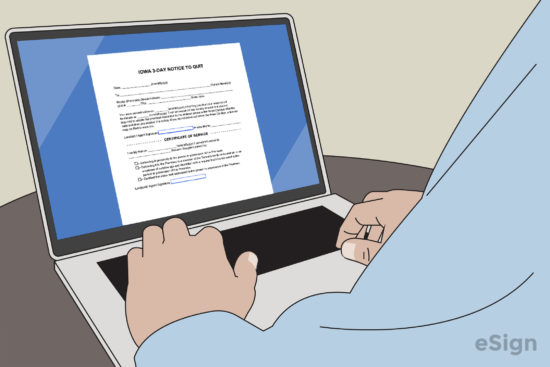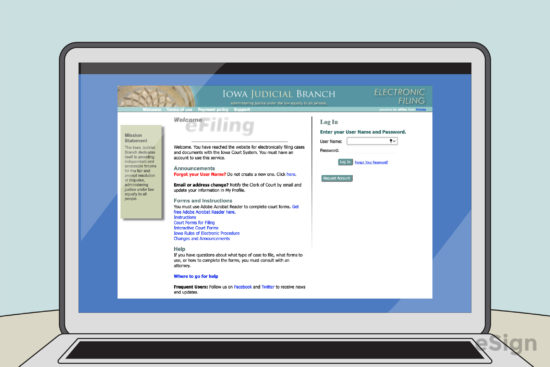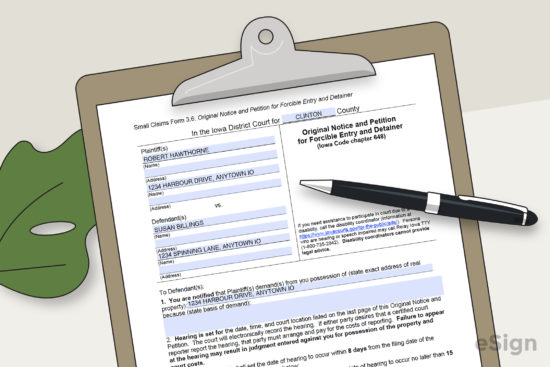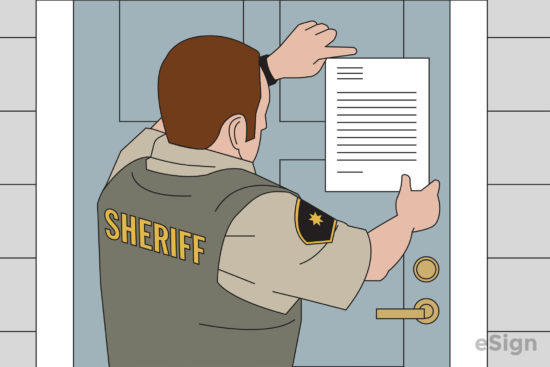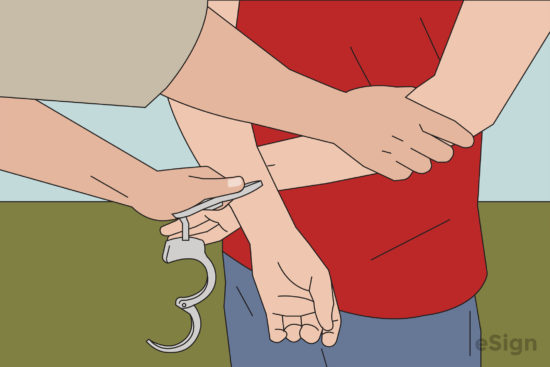Eviction Notices: By Type (5)
3-Day Notice to Quit | Non-Payment – Notifies a tenant that they have defaulted on rent and have three days to pay the landlord. – Notifies a tenant that they have defaulted on rent and have three days to pay the landlord.
Download: PDF |
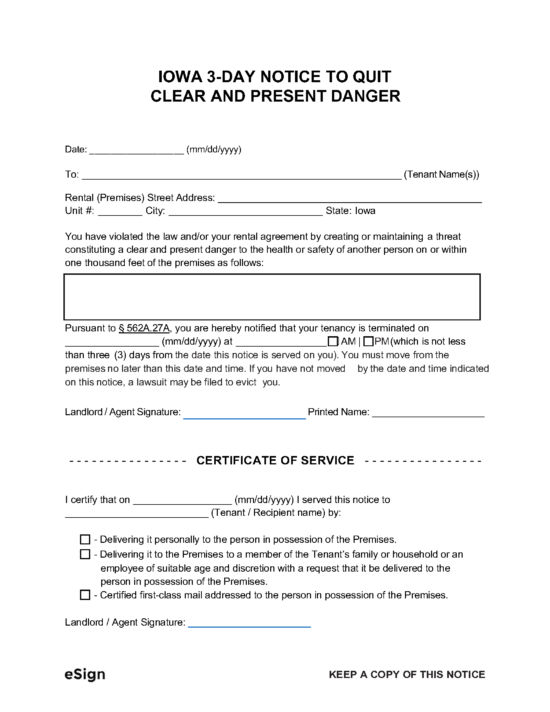 3-Day Notice to Quit | Clear and Present Danger – If a tenant causes or threatens harm to another individual, a landlord may terminate the lease with this 3-day notice. 3-Day Notice to Quit | Clear and Present Danger – If a tenant causes or threatens harm to another individual, a landlord may terminate the lease with this 3-day notice.
Download: PDF, Word (.docx), OpenDocument |
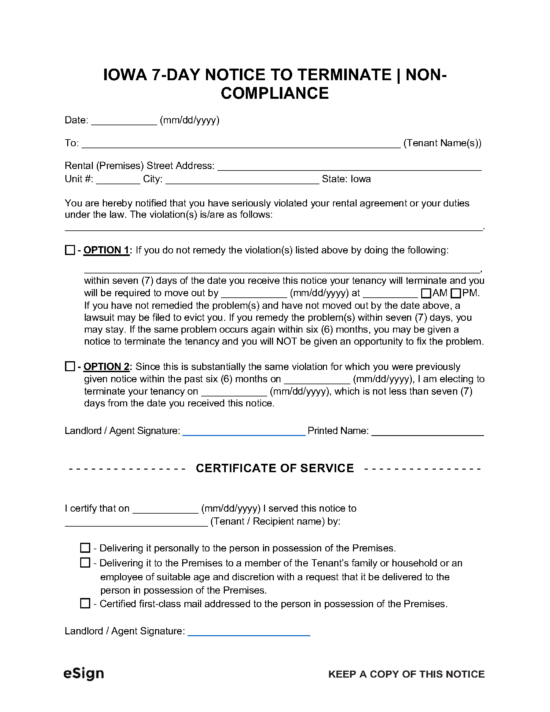 7-Day Notice to Terminate | Non-Compliance – Informs a tenant that they have committed a material non-compliance and must remedy the situation within seven days. 7-Day Notice to Terminate | Non-Compliance – Informs a tenant that they have committed a material non-compliance and must remedy the situation within seven days.
Download: PDF, Word (.docx), OpenDocument |
 30-Day Notice to Terminate Month-to-Month Lease – A lease termination letter used to end a monthly lease agreement. 30-Day Notice to Terminate Month-to-Month Lease – A lease termination letter used to end a monthly lease agreement.
Download: PDF, Word (.docx), OpenDocument |
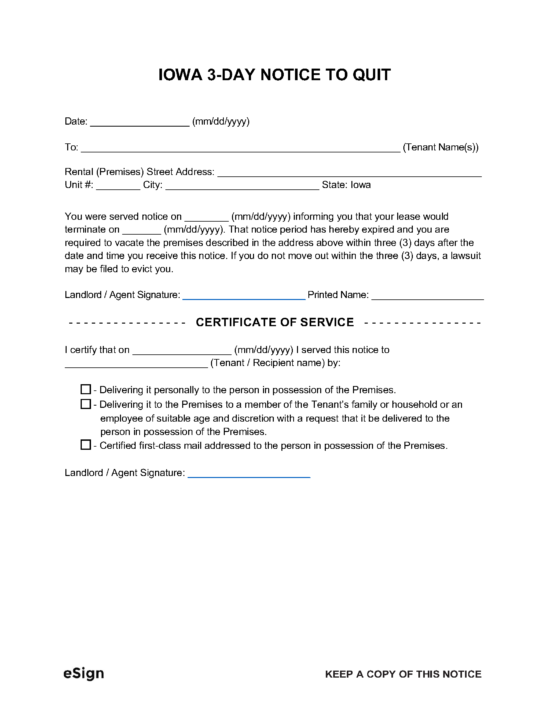 3-Day Notice to Quit – If a tenant does not move out on their own accord after having been served a 7-day or 30-day notice to quit, the landlord can deliver this 3-day notice as a final warning. 3-Day Notice to Quit – If a tenant does not move out on their own accord after having been served a 7-day or 30-day notice to quit, the landlord can deliver this 3-day notice as a final warning.
Download: PDF, Word (.docx), OpenDocument |
Notice Requirements
How to Evict a Tenant in Iowa
Step 1 – Serve Notice to Quit
An eviction action in Iowa (called a “forcible entry and detainer”) can be pursued by a landlord if the tenant breaks the terms of the lease. Before filing for eviction, the landlord must first serve a notice to quit on the tenant.
Step 2 – Serve 2nd Notice to Quit (If Applicable)
If the notice to quit is for non-compliance or month-to-month lease termination, and the notice has expired without action, the landlord cannot immediately file a forcible entry and detainer action without first serving a second 3-Day Notice to Quit.
Step 3 – File a Case on EDMS
The landlord can commence the eviction process if the tenant remains on the premises after the notice period expires and hasn’t remedied the problem (if possible).
Forcible entry and detainer suits are handled by small claims court and can be filed online at the Iowa Judicial Branch eFiling web portal. The landlord will need to create an Electronic Document Management System (EDMS) account and open a new case (see e-filing instructions).
Step 4 – File Petition for Forcible Entry and Detainer
Step 5 – Serve Notices
The Original Notice and Petition (Form. 3.6 or 3.1) and Appearance and Answer (Form 3.11) must be downloaded from the “My Filings” section of the landlord’s eFiling account and delivered to the tenant three days before the hearing date.
Step 6 – Hearing
If the tenant accepts the landlord’s claim, judgment may be entered without a hearing. If the tenant denies all or a part of the landlord’s claim, the hearing will take place at the date and time set by the clerk.
Step 7 – Judgment
The judge will make their final judgment after hearing the testimony from all the parties. If the tenant wins the case, they will not have to vacate the premises. If the judge rules in favor of the landlord, the tenant will have to remove themselves from the premises. The sheriff’s department is in charge of overseeing the removal of the tenant and their property.
Court Forms + Resources
Forms
- Original Notice and Petition for Forcible Entry and Detainer (Form 3.6)
- Signing: Landlord or Landlord’s Attorney
- Verification of Account, Identification of Judgment Debtor, and Certificate Re Military Service (Form 3.27)
- Signing: Landlord or Landlord’s Attorney and Tenant
- Original Notice and Petition for a Money Judgment (Form 3.1)
- Signing: Landlord or Landlord’s Attorney
- Appearance and Answer of Defendant(s) (Form 3.11)
- Signing: Tenant or Tenant’s Attorney
- Notice of Appeal (Form 23.26)
- Signing: Appealing Party or Attorney
Resources
